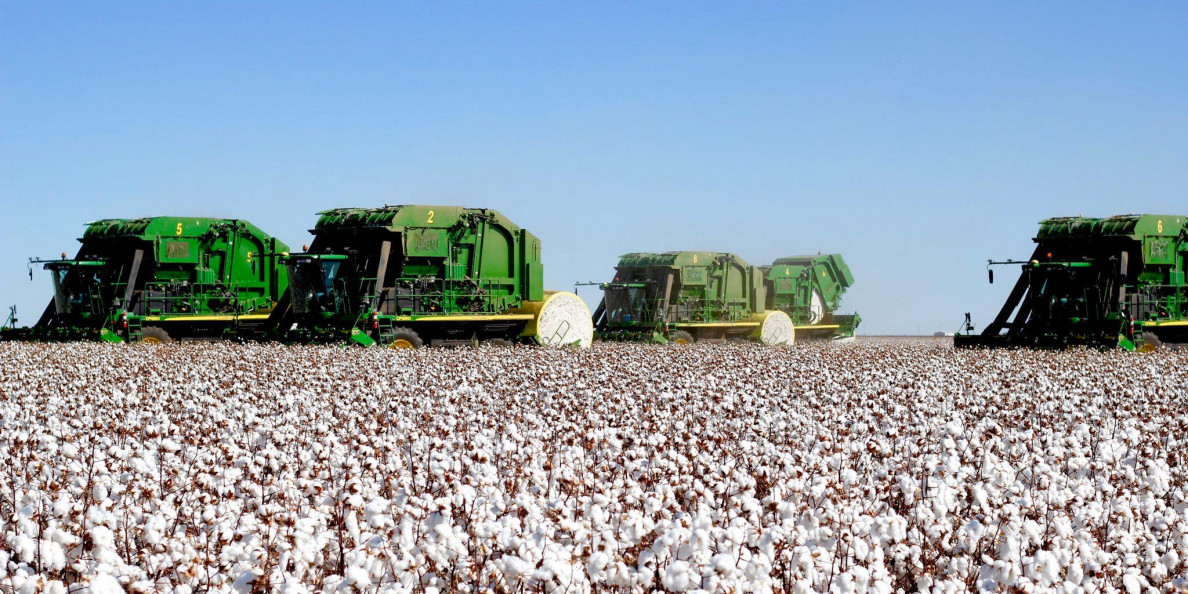Currently, the favorable weather in US major cotton producing regions, harvests progress and good-to-excellent ratio indicate that the production and quality will be good this season, while in the meantime, US cotton export sales keep weak, and some market shares are squeezed by the Brazilian cotton. From the prospective of US cotton supply and demand, ICE cotton futures market faces large pressure.
1. US cotton production is expected to rise
According to USDA’s projection in Oct, US cotton production is expected to rise by 18% from 2018/19 season to 4.73 million tons in 2019/20 season. Harvest areas may rise by 23% to 12.509 million acres, and yield may inch down by 3% to 839 pound per acre. According to the growing development, weather condition and harvest progress, its production and quality may be good this season.

In terms of weather, according to USDA’s drought degree and coverage rate, the weather is normal in major producing regions (the production accounts for about 89.7% of the total). In early planting period, the drought degree and coverage rate was similar with the level in 2016, and later, during the late planting period and growing development, the rate was better than that in 2015. The field was relatively moisture. Then during the bolls opening period, the moisture tended to be dried, which was favorable for the growing.

For the growing condition, the good-to-excellent ratio was obviously higher than last season. Though the rate continues to fall since Sep, the cotton has been harvested gradually, which has no big influence on production and quality.

For the harvests, by the week ending Nov 10, 62% of the crops has been harvested, up 9% from previous week, 9% from a year ago, and 3% from five-year average, according to USDA.

By the week ending Oct 31, inspection volumes of US upland cotton were 1.255 million tons, an increase of 23.9% year on year, about 26.54% of the total output (4.73 million tons). Inspection volumes of US Pima were 12.8kt, down 38.6% year on year, about 8.2% of the total output (156kt). About 86.2% of the cotton can be delivered, up 20.5% year on year. The production and quality is expected to be better than last season.

Meanwhile, with the higher inspection volumes and rebound of ICE cotton futures, the warehouse receipts also moved up obviously. By Oct 29, warehouse receipts on ICE cotton reached 24,948 lots, up 2.5% year on year.
2. Weak US cotton export sales

According to USDA, by the week ending Oct 24, export sales of 2019/20 US upland cotton were 24.5kt, a fall of 23% from the prior week, and down 39.4% from the prior 4-week average. Total export sales were 2.128 million tons, up 2.6% year on year. Weekly export shipments were 33.8kt, up 0.3% from prior week, and down 1.2%from the prior 4-week average. Total export shipments were 534kt, up 18.5% year on year.
Total export sales of 2019/20 US upland cotton and Pima were 2.1808 million tons, about 60.7% of the forecast exports, and total export shipments approached 556.6kt, about 25.5% of the forecast shipments.
In the second half year, weekly export shipments of US cotton continue to decrease, and export sales of both 2019/20 and 2020/21 cotton are unfavorable. Asian mills keep cautious to purchase feedstock, and demand is not optimistic.
Besides, the US cotton has no obvious price edge, and plus the Sino-US trade friction, the Brazilian cotton shows high substitutability.
According to CONAB, 2018/19 Brazilian cotton production may rise by 35.9% year on year to 2.726 million tons, and exports may rise by 59.1% to 1.55 million tons. In the first ten months of 2019, Brazilian cotton exports have doubled from the same period of 2018 to 1 million tons.
In general, the weather condition, harvests progress and delivery rate of US cotton show that the production and quality is supposed to be good this year. But US cotton exports keep weak, and some market shares are squeezed by the Brazilian cotton. From the angle of supply and demand, ICE cotton futures market faces large pressure. |








